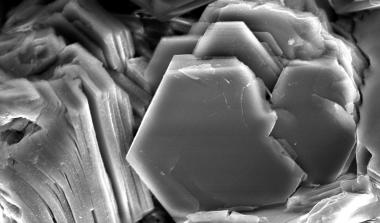Extractive Industries
At the James Hutton Institute's Aberdeen site, a number of services from analytical chemistry laboratories, excel at problem solving for extractive industries including FTIR, XRD, SEM and Isotope Analysis.
Oil and Gas
James Hutton Limited analytical techniques are useful for geoscientists and chemists in the oil and gas sectors to enable decision making in relation to exploration and reservoir appraisal, production start-up and commissioning, production control/enhancement/compliance, pipeline system integrity/flow assurance and decommissioning. The business supports a number of large oil companies and platform operators to solve industry wide problems through analytical chemistry services.
An established team of world-leading scientists, based at the James Hutton Institute’s Aberdeen site, provide expert analysis and interpretation of results which enable the delivery of powerful solutions.
Most materials can be analysed; large or small, liquid or solid. This might include oils, sludges, sediments, produced waters/solids, minerals and drill cuttings.
In particular, specialisms lie in problem samples and ‘unknown’ contaminants. If there is something that is not supposed to be there, using a variety of integrated techniques, analysts will attempt to identify what it is, where it’s come from and suggest possible remedies.
People are what set us apart from other analytical laboratories. The scientists that carry out analyses for James Hutton Limited are dedicated experts in their own techniques with many years of experience, which provides a more detailed understanding and interpretation of results than a high throughput laboratory. A small, close knit team also means that techniques are often combined to find the most accurate results for clients and there are extensive material libraries and experiences to draw from.
Additional analytical services for the oil and gas industry are available through our marketing partner Ellington Geological Services
Analytical Applications for Oil & Gas
- The identification of any crystalline substances, such as most minerals and quantification of the proportions of different minerals or indeed many other substances when they are present in a mixture
- Identification of components in complex mixtures such as scales, deposits, drilling fluids and muds
- Characterisation of paints or the analysis of soils from contaminated land
- Biological (plants, fungi, bacteria, insects)
- Geological (mineralogy, grain size, mineral relationships, porosity)
- Fibres (glass, asbestos, natural, manmade)
- Powders and Dust
- Surface area and porosity measurement
- Isotope analysis
Mining Supply Chain
James Hutton Limited offers a broad range of services for the mining industry, ranging from world-leading mineralogy expertise through to environmental impact assessments, public enquiries and developing strategies for land reclamation and vegetation establishment.
We have worked with many companies in this sector including mining operations in Australia, USA and the UK.
All operations are covered by ISO 9001 and ISO 14001 accreditation and many of the analytical methods by ISO17025.
Analytical Applications for Mining
- Answering a wide variety of mineralogical questions from discovery and recovery through to reclamation and remediation
- Environmental monitoring, impact and protection assessments s for wildlife, vegetation, soil, water, communities, contamination
- Risk assessment for the release of water pollutants for example from pit lakes, tailing impoundments, waste rock dumps
- Rehabilitation of mine sites
- Suitability of surface capping for vegetation establishment and soil stabilisation
- Consultancy services for bio-remediation and site specific strategies for recovery
- Site investigation, characterisation and speciation of contaminants

James Hutton Limited offers services that can detect, identify and analyse contaminants in a broad variety of substances for a huge range of sectors.

Watch our free analytical webinar covering problem samples & scientific solutions / exploring investigative techniques for the energy sector

A follow up to our March 2021 webinar. Putting techniques into practice.
Services








Case Studies


















